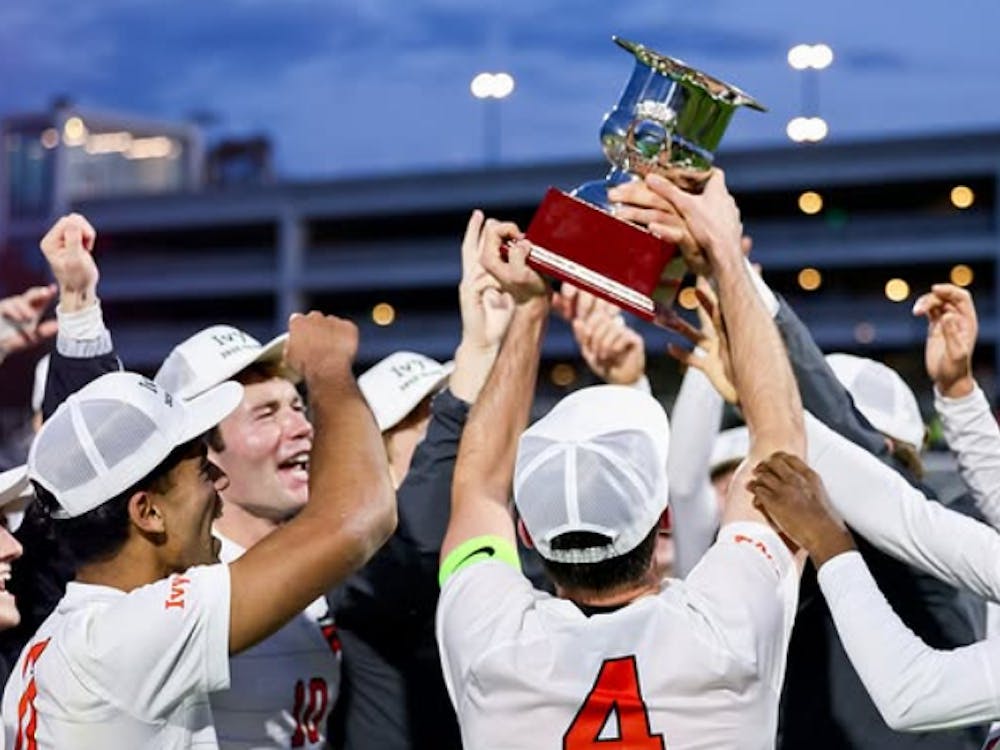On the final Saturday of October, the football team made its way to Cambridge, Mass., for Game 1 of the 2003 Harvard-Yale-Princeton football championship. While not an officially recognized "championship," it marks the most important series of games for the three teams and their respective schools.
While the Tigers fell to Harvard, disqualifying them from a H-Y-P sweep and destroying their chances for the ever-elusive bonfire, something was markedly different about the Princeton team that stepped onto the field at Harvard Stadium on October 25.
The team had started to click.
While that phrase really has no definitive meaning, it provides the only way of describing the general changes that the fans saw. Everything seemed to be working for the team.
With all cylinders pumping together, lowly Princeton matched a dominant Harvard squad point-for-point all the way into overtime, where the Tigers finally lost the game, 43-40, after giving the Crimson their biggest scare of the season up until that point (though Harvard would lose unexpectedly to Dartmouth a week later).
The following weekend Princeton hosted Cornell and proved that its showing against the Crimson was not a fluke, dominating the Big Red for four straight quarters. The Tigers won 28-6, and nearly managed a shutout.
Having first watched the team in its dismal defeat at the hands of Colgate, I was completely surprised while watching the contest against Cornell. As I looked out onto the field last Saturday, I saw a new Princeton team. Even the coaches seemed to act differently — the entire team looked as though it expected to win. While greater confidence contributed to this transformation, I believe two interrelated aspects of the game in which the Tigers showed marked improvement — the length of its drives and the effort it maintained for four quarters — were responsible for the change.
In this day and age of football, focus has shifted to an explosive passing game while the running game has almost taken a backseat.
This new style of offense relies more on the big play than on sustained drives based on a solid ground attack. While Princeton could afford to commit itself to this style of play last season, this year's team and coaching staff have had to adjust to what works.
The Tigers' passing game has not been as strong this season, so the team turned to the running game to anchor its offense. Whereas the team lost one stellar running back from last year's squad to graduation, it found two more to fill that gap — juniors Branden Benson and Jon Veach. The offensive line has opened up holes, and the fullbacks, junior Joel Mancl and senior Tim Bowden, have hit key blocks to keep the holes open.
Both Benson and Veach have improved their running styles since last year, insofar as they square their shoulders and hit the holes that much faster. When they are hit their momentum carries them forward an extra yard.
The consistency of these three groups — the offensive line, the fullbacks and the running backs — have allowed the Tigers to put together sustained drives of 60-plus yards, which have kept the defense fresh for four quarters because they are on the field less.

Related to the issue of prolonged drives is the idea of sustaining the same level of play for the entire game. I have been saying it all season: the Tigers have talent. But when you only play for half the game, you're going to get beat.
The Tigers' early games were merely a series of letdowns, yet in the last two games there have been none of these. Even when the offense could get little going in the third quarter of the Cornell game, there was no letdown. Consistent play over the course of the entire game elevates the talent Princeton has to a level where they can compete with any team in the league — even Penn (who also had a close scare last weekend against Brown, a team Princeton beat).
When it comes down to it, if the Tigers maintain these two factors in their play then the outlook for their remaining three games of the season will undoubtedly be more optimistic than it was only three weeks ago.







